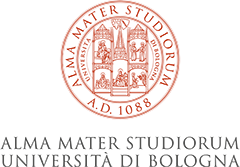The educational experience, when it occurs in a positive and stimulating context, can help spreading the sense of beauty as a positive interaction and relationship with the environment. Therefore, it’s important to make children experience the beauty from the early childhood, to allow them to experience a sense of trust, and to recognize the values in the world, in people, places, objects and knowledge, to seek values, rules, to see the world with different eyes.

VAM is a digital space for students, future teachers, artists and educators who are involved in the design and implementation of artistic itineraries (digital white rooms) and documentation paths.
The VAM is structured in two areas.
The first, the Exhibition Area is mainly addressed to future teachers, who can design and set up virtual exhibitions in the white rooms. These last are dedicated to the themes of visual and performing art in didactic contexts. A white room is a personal and empty space where students' creativity is encouraged. It is white because it’s empty and is to be filled and enriched. In this environment, students, both individually and in groups, set up their own digital exhibition using resources such as images, videos, audio files, etc. with which it is possible to put together contents to write original stories. Each student becomes a designer in search of new meanings and interpretations of the artistic heritage; what users do is a research, which starts from their personal experiences in formal and informal, real and digital, contexts, to get to the construction of original creations.

The second, the Documentation Area is mainly addressed to teachers and educators and focuses on the collection of best practices/didactic experiences, which have been previously collected in a repository. These experiences are about the visual and performing arts and are carried out by artists, teachers and future teachers in kindergardens and primary schools. The documentation of educational experiences, therefore, aims at sharing and enhancing quality educational experiences, to testify what has been achieved. It is still a training practice for all those who are engaged in the educational field and are always looking for new inputs for reflection and improvement of the practices themselves.



